Camino de Santiago: The French Way
Places We Walk / Camino Frances (French Way)
Places We Walk / Camino Frances (French Way)
From TBC
This is the most popular route of the Camino de Santiago for a reason. The 38-day journey is the perfect encapsulation of the spirit of the Camino, taking in stunning landscapes and hospitable villages in both France and Spain. Walk through Logrono, Burgos and Leon on your way to Santiago de Compostela, meeting some of the most interesting people – and enjoying some of the best food and wine – that you’ll ever encounter
Saint Jean Pied de Port /Santiago de Compostela
Moderate to Challenging Walk
TBC
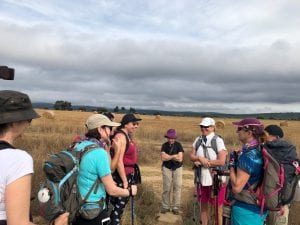
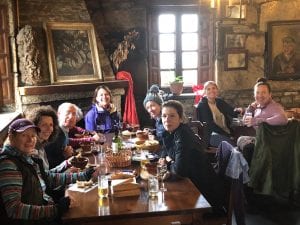
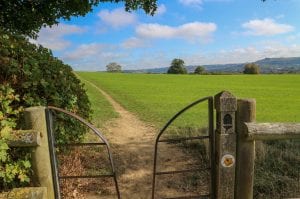
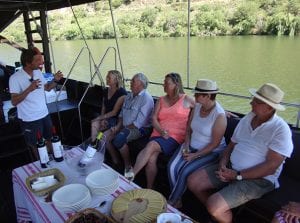
The French Way, or the Camino Frances, is the most famous of the Camino de Santiago routes. Starting on the French side of the Pyrenees, it runs some 780 kilometres to the cathedral at Santiago de Compostela and was popularised by the movie ‘The Way’. Now, it sees thousands of pilgrims every year, many of whom are undertaking their very first Camino journey.
This is a special walk. The medieval pilgrimage was given new life thanks to the efforts of Father Elias Valina, a priest who painted the yellow arrows along the route that still guide pilgrims today. The path, which takes pilgrims through mountains, villages, cities and the seemingly endless plains of northern Spain’s Meseta, is an opportunity to slow down and live day-to-day. You’ll come out the other side not only feeling stronger than you ever have, but also more connected to people – both pilgrims and locals – and the natural world.
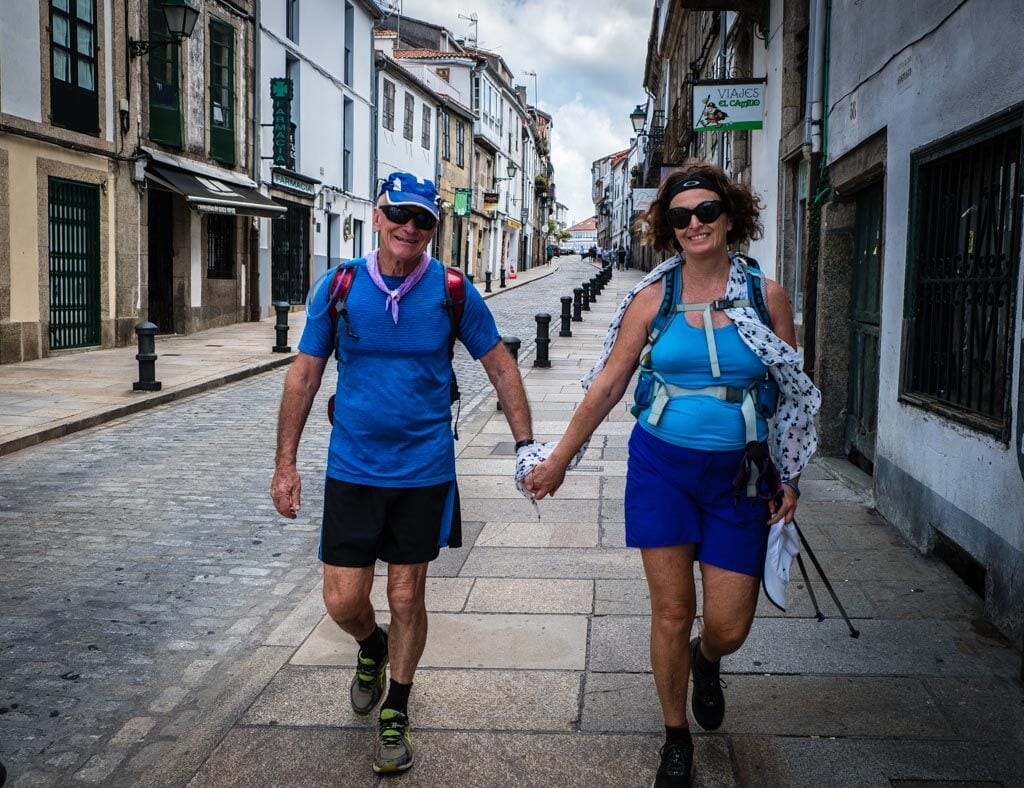
Day 1 | Arrive in Saint Jean Pied de Port
St Jean Pied de Port is a beautiful French town at the foothills of the Pyrenees, which create a natural border between France and Spain. It’s everything you’d expect from a bustling market town: old bridges spanning the river, restaurants and hotels lining the cobbled streets and incredible mountain scenery. It is the traditional starting point for the Camino Frances, or the French Way, which is the most popular of all the Camino de Santiago routes.
Despite its tranquil surface, St Jean is a hive of activity with pilgrims preparing for the journey ahead. Well wishes of ‘Buen Camino’ (good walk) are common from this point right up until Santiago de Compostela. After arriving, you’ll check in at the pilgrim’s office, take your pilgrim passport (which is stamped along the path to Santiago) and chat with the local volunteers about the route. They’re always eager to impart advice. Then it’s dinner and what is usually a restless night thanks to the adrenaline rush from knowing you’re about to start the Camino de Santiago.
Day 2 | Saint Jean Pied de Port – Roncesvalles | 24 km / 8 hours
What a way to begin your Camino. Rise early and hear the click-clack of walking poles on the road as you and your fellow pilgrims head into the Pyrenees. You’ll follow the Napoleon Route, which is a tough yet stunning uphill walk that peaks at approximately 1400 metres. The views today are breath-taking – as is the walking, at times – and after crossing the Spanish border you’ll descend to Roncesvalles.
Roncesvalles is a tiny settlement with a large albergue (a pilgrim hostel) and plenty of outside tables to share a drink or pintxos, which is the Basque region’s equivalent of tapas. The village is a welcome sight after a difficult day’s walking and a lovely place to put your feet up for the evening.
Please note: there is the option of splitting this day and stopping in Orisson, which is 8 km outside of Saint Jean Pied de Port. It’s possible to transfer from here to Saint Jean then back the following morning, meaning you’ll walk 8 km the first day and 16 on the second.
Day 3 | Roncesvalles – Zubiri (22 km) or Akerreta (28 km) / 7–8 hours
Today you’ll cross two mountain passes – Alto de Mezquiriz and Alto de Erro – before descending to the village of Zubiri. The tough ascents and descents continue, and while they’re no doubt testing at times, they’re also the perfect way to toughen your leg muscles for the rest of the journey. Remember to take things at your pace: there’s nowhere you need to be. Finish the day in Zubiri, or press on a little further to the village of Akerreta. A slightly longer day today means more time in Pamplona tomorrow.
Day 4 | Akerreta or Zubiri – Pamplona | 12 or 16 km / 3–4 hours
You’ll feel an immense sense of satisfaction having crossed the Pyrenees and descended into Pamplona. Most of the day will be spent following the River Arga through small villages including Irotz, Villava and Burlada before arriving in Pamplona.
Pamplona, which is best known for its San Fermin festival and the running of the bulls, is a wonderful city full of Gothic architecture and medieval streets. It’s the perfect place to celebrate the start of the journey and the achievement of crossing the mountains, with plenty of variety when it comes to dining options and lots of atmospheric little bars to share a drink with some other pilgrims in.
Day 5 | Pamplona – Puente La Reina | 22 km / 5–6 hours
Follow the yellow arrows that will guide you all the way to Santiago de Compostela. This morning, they will lead you through the outskirts of Pamplona, crossing several parks and eventually bringing you to a monument dedicated to pilgrims at the top of the Alto del Perdon – the Hill of Forgiveness. A steep descent takes you through several small villages before reaching Puente La Reina, a beautiful medieval village with a six-arched bridge crossing the river.
Day 6 | Puenta La Reina – Estella | 20 km / 6 hours
You’ll encounter some beautiful spots to stop along the path to Estella. It can take a while to slow your mind down when you begin your Camino journey, so take some time to grab a snack, pause and enjoy the countryside surrounding you. There are plenty of little villages along the way, but Estella is a truly gorgeous town that was known as ‘La Bella’ back in the 15th century because of its beauty. The town’s historic centre is a buzz with pilgrims and locals chatting over coffee and wine or sampling tapas and piping-hot baked goods.
Day 7 | Estella – Los Arcos | 23 km / 5–6 hours
Keep an eye out for the wine fountain on your way out of Estella this morning. This fountain was constructed in 1991 for passing pilgrims and red wine flows from 8 am until 8 pm, thanks to Bodegas Irache. This winery has been around for over a century and its vineyards have existed even longer, supplying the royal houses of Navarre as far back as the 12th century. The fountain is a nod to the generosity of the monastery that was once in this spot.
It is, of course, considered impolite to spend your day drinking the free wine, as much as you may want to. Continue on through the villages of Azqueta and Villamayor de Monjardin – stocking up on snacks and water at the latter – before reaching Los Arcos, your destination for the evening, a small town with everything a pilgrim could ever want for (within reason).
Day 8 | Los Arcos – Logrono | 26 km / 7 hours | Optional rest day in Logrono
A long day of walking ahead as you pass through a number of villages en route to Logrono, the capital of the province of La Rioja. This is wine country, and you’ll notice vineyards dotted around the landscape as you follow the path on an almost constant uphill accompanied by steep descents. The day’s challenges will be all but forgotten as you enter Logrono, the second-biggest city along the French Way and an ideal place to spend a rest day.
The city is rich in history and cultural traditions and if ever a place embodied the spirit of Spain’s tapas tradition, this is it. As the capital of La Rioja, Logrono sees Rioja wine – made from the tempranillo grape – flowing abundantly and many locals can be found enjoying a Spanish-style bar crawl through the city’s charming streets. Be sure to visit the Cathedral of Santa Maria la Redonda, which houses a painting of the Crucifixion of Jesus Christ by Michelangelo.
Day 9 | Logrono – Najera | 28 km / 6–7 hours
Be sure to stock up on snacks today as the first 17 kilometres of the walk is undoubtedly beautiful but does not pass through any villages. It can be quite warm in the middle of the day, especially in the open fields and through Najera’s outskirts, but the old part of town has a number of shaded cafes as well as grassy areas along the river banks that are great for an afternoon nap.
Day 10 | Najera – Santo Domingo | 21 km / 4–5 hours
Looking for a little fanciness on your Camino? Santo Domingo is a dream come true. If there’s one place to steer clear of a satisfying pilgrim’s meal, it’s here, thanks to the Michelin-starred restaurant Los Caballeros. It’s also worth treating yourself to a pre-dinner cava (Spanish sparkling) on the veranda of the Parador, a luxurious hotel that has taken over a 12th-century hospital building. Be sure to visit the cathedral as well to discover the story of the celebrated chickens of Santo Domingo.
Day 11 | Santo Domingo – Belorado | 22 km / 5 hours
The path today will see you cross from La Rioja into Leon and Castille, eventually arriving in the small town of Belorado, which has approximately 2,100 inhabitants. It’s not a particularly taxing walk and a highlight is crossing the River Orja via the Puente del Santo, which is 148 metres long and has 16 arches. There are a number of villages along the way to refill water and stock up on treats to keep you going.
Day 12 | Belorado – Atapuerca | 30 km / 7–8 hours
Depending on the time of year, the rolling hills today are an extraordinarily rich green colour. There’s magnificent scenery throughout the day and the path will take you through the archaeological site of Atapuerca, where fossil records of the earliest humans in Europe have been found.
Day 13 | Atapuerca – Burgos | 20 km / 5 hours | Optional rest day in Burgos
The path today as you head into Burgos is quite possibly the least interesting stretch of the entire Camino Frances. That said, it is worth the effort because Burgos is a fantastic medieval town. There are many historical landmarks including the World Heritage-listed Burgos Cathedral, as well as plenty of other churches, palaces and striking buildings. The markets are also worth visiting and there seems to be a piece of history around every corner. This was, after all, the historical capital of the Kingdom of Castille. Like Logrono, Burgos is a great place to spend a rest day as there is plenty of entertainment to be found all over town, not to mention some really great bars and restaurants.
Day 14 | Burgos – Hornillos | 21 km / 5 hours
Depart Burgos, a town you’ll no doubt remember when your Camino is over and enjoy a pretty stroll out of town. The views continue as you walk through open plains and fields of crops to Hornillos, a tiny settlement with less than a hundred people. This is beginning of an area known as the ‘Meseta’, an expansive area of flat plains, big skies and general emptiness. It’s a remarkable landscape and though some may think of it as being boring, many find that it’s one of the more memorable sections of the Camino.
Day 15 | Hornillos – Castrojeriz | 20 km / 5 hours
Departing Hornillos you’ll eventually reach the town of Hontanas, a desert oasis with a number of bars where you can buy a snack and a cold drink. A particular favourite among pilgrims is the humble tortilla, or Spanish omelette, which can be found almost everywhere. The walk today has a gentle climb before returning to the peace and tranquillity of the open plains. It’s worth visiting the ruins of the Castrojeriz’s castle once you’ve arrived as this was where Queen Eleanor of Castile was murdered in the 14th century by order of her nephew Pedro.
Day 16 | Castrojeriz – Fromista | 25 km / 6 hours
Leaving Castrojeriz, you’ll pass the highest point of the Meseta – the Alto de Mostelares – which is a challenging but rewarding climb with views over the vast, flat landscape. From here, you’ll continue past fields of crops as you approach Fromista along a stretch of an 18th-century canal. Fromista is a reasonably sized village with several bars and cafes. It’s also the birthplace of Peter Gonzales, known as Saint Elmo, who was the patron saint of Spanish and Portuguese sailors. A statue of him can be found in the Plaza de San Pedro. The town’s Gothic church, with a renaissance façade, is also worth a visit.
Day 17 | Fromista – Carrion de los Condes | 20 km / 5 hours
Your journey across the Meseta continues today from Fromista to the town of Carrion de los Condes. It’s easy, flat walking and it’s hard not to feel the immensity and beauty of the world around you. You’ll pass through a number of villages, several of which have churches dating back some 500 years, while Carrion de los Condes has a good variety of bars, restaurants and markets for pilgrims to fuel up at.
Day 18 | Carrion de los Condes – Calzadilla de la Cueza | 20 km / 5 hours
Lace up for another day of walking along the flat plains of northern Spain. There are no villages between Carrion and Calzadilla, so be sure to stock up on water and snacks before you depart. You’ll be following the old Roman Road that once connected Astorga with Bordeaux – a road filled with over a thousand years of stories.
Day 19 | Calzadilla de la Cuez – Terradillos de Templarios | 27 km / 6 hours
Today you’ll walk through the town of Sahagun, which was named after Bernardino de Sahagun (born 1499) who dedicated his extraordinary life to completing missionary tasks. It’s also the town where the Camino de Madrid – which begins, unsurprisingly, in Madrid – joins the Camino Frances. Once you reach Sahagun you have covered a little over half of the distance from Roncesvalles (Day 2) to Santiago de Compostela. Continue on to Terradillos de Templarios, a quiet settlement, for a well-deserved evening’s rest.
Day 20 | Terradillos de Templarios – Bercianos del Real Camino | 23 km / 5 hours
This gentle day comes as you’re no doubt feeling in peak condition with leg muscles accustomed to the repeated walking days. You’ll find that you have gotten yourself into a routine, whether it’s rising early and enjoying the tranquil mornings or slowing things down and spending more time out on the road taking everything in.
Day 21 | Bercianos del Real Camino – Mansilla de la Mulas | 25 km / 5 hours
Once again, villages are sparse along the path today so be sure to stock up on a decent amount of water and some food before you depart Bercianos del Real Camino. You will pass through the medieval town of Puerta del Castillo, where there are plenty of temptations for those pilgrims with a sweet tooth, and just up the road you’ll find your destination of Mansilla de la Mulas. Before you do, however, you can’t miss Bar Elvis in the tiny town of Reliegos. With an eccentric owner and a décor straight out of Nashville, it’s a great pit stop for a cold beer.
Day 22 | Mansilla de la Mulas – Leon | 18 km / 4 hours |Optional rest day in Leon
You’ll be setting a cracking pace towards Leon after your days of walking the Meseta and though there are some not-so-attractive sections today, they are something different to endless plains and, more importantly, signal that you’re quickly approaching the lovely city of Leon. There are a number of villages with bars, bakeries and more along the way, and Leon itself is a wonderful city.
This is another ideal spot for a rest day. The city combines stunning historical architecture with an irresistible energy and its standout attraction is the cathedral, which is one of the most beautiful in Spain. The Rose Window is simply breathtaking. While Leon is a modern city, the walled Old Town is very well preserved and the winding alleys and little plazas are incredibly atmospheric. The oldest church in Leon has Vespers every evening and, despite the service being solely in Spanish, it’s worth a visit just to hear the choir made up of nuns.
Day 23 | Leon – Villadangos del Paramo | 22 km / 4–5 hours
It’s a flat, easy walking day to leave Leon though the outskirts of town are by no means the prettiest section of the Camino. Don’t worry; the views – and the inclines – pick up on tomorrow’s walk. Villadangos del Paramo is a small community but has an interesting church dedicated to Santiago.
Day 24 | Villadangos del Paramo – Astorga | 26 km / 6 hours
A welcome change of scenery today as the astounding views you will have grown accustomed to return in full glory. There are plenty of villages to pass through today including Puenta de Orbigo, which has a stunning medieval bridge, and Hospital de Orbigo, a historic Templar town.
Astorga was an important town back in the days of the Romans – as we know by the Roman road along the Meseta that links it to Bordeaux – and its beautiful Palacio Episcopal was designed by none other than Antonio Gaudi, in classic Gaudi fashion. His work was influenced by his passions in life including architecture, nature, and religion, and the Palacio Episcopal is a truly mesmerising sight. It also houses a pilgrim’s museum. Feel free to treat yourself to Astorga’s homemade chocolate too, or its famous ‘mantecadas’, which are a cross between a muffin and a scone. All in the name of cultural immersion, of course.
Day 25 | Astorga – Rabanal del Camino | 20 km / 5 hours
Set off from Astorga’s Plaza Mayor and follow the Camino’s yellow allows along a well-marked trail. A day of beautiful countryside walking lies ahead as you follow the path through quaint villages and up a steady climb to Rabanal del Camino, your home for the evening. In the 12th century this place was home to a hermit named Gaucelmo, who dedicated his life to helping pilgrims on their way to Santiago. At 7 pm it’s sometimes possible to watch the local monks hold a Gregorian chant service at the Monasterio Benedictino, which is a memorable Camino experience.
Day 26 | Rabanal del Camino – Molinaseca | 25 km / 6 hours
Continue climbing from Rabanal into the mountains and reach Foncebadon, a crumbling village with lovely views. Above Foncebadon is the Cruz de Ferro (Iron Cross), an important – and often moving – point on the Camino de Santiago. Pilgrims traditionally carry a stone from their home country and place it at the bottom of the cross, along with notes and photos of loved ones. It’s worth spending some time reading some of the stories and seeing the impact the Camino has had on so many people.
Walk a little further from the Cruz de Ferro and you’ll hit the Camino’s highest point before beginning the steep descent to Molinaseca. You’ll lose approximately 1000 metres in elevation but Molinaseca, which is situated next to a lazy river, is an ideal spot to rest up and soak your feet with your fellow pilgrims.
Day 27 | Molinaseca – Villafranca del Bierzo | 32 km / 7–8 hours
Spoilt once more with both views of rolling hills and friendly villages, you’ll find plenty of places to stop today for a relaxed lunch or to pick up some local produce for a picnic. You’ll also pass through Ponferrada, one of the larger cities on the route, where you can pick up supplies and explore the Castillo de los Templarios, a castle built by the Knights Templar with a moat and drawbridge.
Villafranca del Bierzo is quite a large town and the Church of Santiago Villafranca is definitely worth visiting. It was built in the 12th century and its northern door is known as the Door of Forgiveness. It’s said that pilgrims who cannot continue their journey as a result of illness or injury can be granted indulgences here as if they had made it to the cathedral in Santiago de Compostela.
Day 28 | Villafranca del Bierzo – Herrerias | 23 km / 4–5 hours
Enjoy a day of varied terrain before arriving at Herrerias, which sits at 702 metres above sea level. You are now walking towards the very special O Cebreiro section of the Camino and while some decide to push on to the top in one go, it’s well worth resting in Herrerias to make sure you’re refreshed and energised for the final push to the top. It’s a beautiful spot to spend an evening.
Day 29 | Herrerias – O Cebreiro | 10 km / 3 hours
Sitting at 1300 metres above sea level, O Cebreiro overlooks the surrounding landscape and marks the border between the regions Castilla y Leon and Galicia. The settlement wouldn’t exist without the Camino and the Camino wouldn’t be as special without this magical enclave, which houses the second Holy Grail – a chalice used by a priest while conducting a mass in the 14th century, during which bread and wine turned to flesh and blood. The mountain is often shrouded in an eerie mist, with small stone huts dotting the summit and restaurants serving up ‘pulpo’ (octopus), along with Galician stew and a delicious local cheese shaped like a hat or a breast, ideally served with a drizzle of honey. The stone village of O’Cebreiro is a truly special Camino moment and you’ll have plenty of time to soak everything up.
Day 30 | O Cebreiro – Triacastela | 21 km / 4–5 hours
The morning descent from O Cebreiro is breathtaking (in the best way possible) and you’ll remember the views forever. Today’s route takes you along dirt tracks, through fields and past the hill of San Roque – where there’s a statue of a pilgrim on its way to Santiago. Triacastela was named for the three castles that once existed; however, unfortunately none exist today. Even so, the town is welcoming and the main street – Avenida Camilo Jose Cela – is lined with bars, restaurants and supermarkets catering to weary pilgrims.
Day 31 | Triacastela – Sarria | 17 km / 4–5 hours
Enjoy a pleasant morning stroll through town before tackling the climb up to Sanxil. The ascent is steep at times but the walking is lovely, with the path weaving through forested areas before reaching the peak. From here it’s a steady descent to Sarria, which is a key town for the Camino. Many pilgrims begin their journey here as they must walk at least 100 km to receive their ‘compostela’, or certificate, after arriving in Santiago. This is also the town where King Alfonso IX died while making his own pilgrimage to Santiago.
Despite the uptick in foot traffic, Sarria is atmospheric town and home to a beautiful, historical village in its upper section. You can visit both the Torre del Batallon – a medieval tower – and the Monasterio de La Magadalena, a former monastery that has been converted into a hotel. With 117 km until Santiago, it’s easy to get caught up in the excitement over the ‘finish line’, but remember, the only thing that matters during the Camino is the next footstep and whoever you’re sharing that with.
Day 32 | Sarria – Portomarin | 23 km / 5 hours
Make the most of your day with an early start along the Rua Major with the old streetlamps lighting the way. Today’s walk to Portomarin will see you travel through at least five villages before arriving via the Camino’s longest bridge, which offers memorable views of the surrounding landscape.
This isn’t actually Portomarin’s original location. It was moved in the 1960s after the Miño River was dammed, leaving the old town underwater, and the historic buildings were rebuilt brick-by-brick in the new location. These days Portomarin is a top spot for an afternoon drink and a well-earned meal. Be sure to taste the town’s tarts and liqueurs, for which it is very well known.
Day 33 | Portomarin – Palas de Rei | 25 km / 6 hours
Today’s walk, which is on the longer side, is a pleasant amble through farming regions, sunflower fields and a number of picnic areas. There are fewer villages along the route so it’s the perfect opportunity to soak up the countryside and enjoy some alone time or the company of your fellow pilgrims. Palas de Rei is a small, welcoming town typical of the Camino, with about 3,700 residents.
Day 34 | Palas de Rei – Melide | 14 km / 3–4 hours
A shorter distance with undulating terrain, today’s walk will see you travel through Casanova and O Coto on your way to Melide. This is where the Camino Frances and the Camino Primitivo – which starts in Oviedo – meet each other and the town has been linked with the Camino de Santiago for centuries. The ‘Pulperia Ezequiel’ is particularly well known for its octopus and the Terra de Melide museum, housed in an old pilgrim hospital, provides interesting information about the region’s history.
Day 35 | Melide – Arzua | 15 km / 4 hours
Much of the day is spent walking through pleasantly shaded oak and eucalyptus forests. This is cattle country and there are more cows than people, though more pilgrims will join you, as Arzua is where the Camino del Norte (the Northern Way) joins the path for the final push to Santiago, which is just 40 kilometres away.
Day 36 | Arzua – Rua | 20 km / 4 hours
The penultimate day of your pilgrimage is a thrilling experience and it’s impossible not to smile along with the other pilgrims and the locals. Tomorrow will be an emotional one, so make the most of a final opportunity for reflection along the path. Rua is a small town with Roman history and may well be your last opportunity to meet strangers along the Camino. Share wine and experiences with your fellow pilgrims, both new and old, and enjoy a good rest so you’re fully charged for tomorrow’s walk into Santiago.
Day 37 | Rua – Santiago de Compostela | 20 km / 4–5 hours
The final day of pilgrimage is a bittersweet affair and you’ll no doubt wish that your journey was not ending. But if the pilgrimage teaches anything it’s acceptance and the final five kilometres, from which Santiago is visible, are some of the most memorable steps you’ll take. Wind your way through the city’s alleys to the steps of the cathedral and soak it up – it’s just as rewarding watching other pilgrims arrive.
When you’re ready you’ll take a trip to the Compostela office to receive your certificate – then it’s time to celebrate. And when it comes to celebrating, Santiago is one of the best. The stunning old town has an endless supply of chorizo, tortilla, Iberico jamon, pulpo and wine, while the atmosphere is unbeatable.
Day 38 | Santiago de Compostela
Your pilgrimage comes to its end after breakfast today and while the Camino may be finished, the memories live on.
Inclusions
37 nights’ accommodation, all carefully selected to enhance your Camino experience
Private en-suite facilities
Daily Breakfast
Information Packs with route maps and Instructions to locate hotels
Luggage identification tags
Pilgrims Passport
Australian and Local 24/7 support & emergency contact details
Guide Book
Optional Inclusions
Dinners, 3 courses with local wine
Suggested Rest days as outlined in itinerary or if required
Upgraded accommodation choices such as paradors, country properties, premium to high-end style
Daily Luggage transfers hotel to hotel (1 bag 20kg Max, unless indicated otherwise)
Private vehicle transfers to the start point of your trip
Single Supplement for your own room
Additional nights’ accommodation before or after trip (please advise at time of booking)
Not Included
Flights
Travel to start point of trip
Transfers not outlined in detailed trip itinerary
Lunches
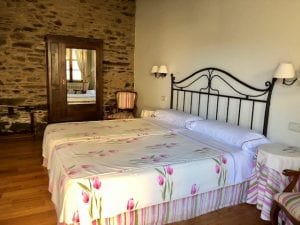 Lorem ipsum dolor sit amet, consectetur adipiscing elit. Ut elit tellus, luctus nec ullamcorper mattis, pulvinar dapibus leo.
Lorem ipsum dolor sit amet, consectetur adipiscing elit. Ut elit tellus, luctus nec ullamcorper mattis, pulvinar dapibus leo.
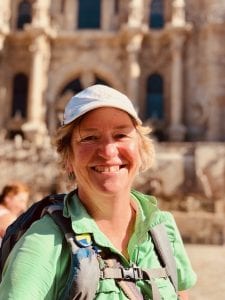
“The French Way was my first ever Camino and it put a smile on my face from the very first step up the Pyrenees. It was exhilarating and so different. You can only have one first, and this Camino was a challenge that I will love for the rest of my life. I’ll never forget the people, their stories and the villages in France and Spain. I never wanted the pilgrimage to end. I knew as soon as I finished that it was true what I had heard – you can never stop at one Camino.”
– Glenyce, Founder of Wandering the World




We are constantly documenting our travels around the world, check us out at #wanderingtheworldwithus